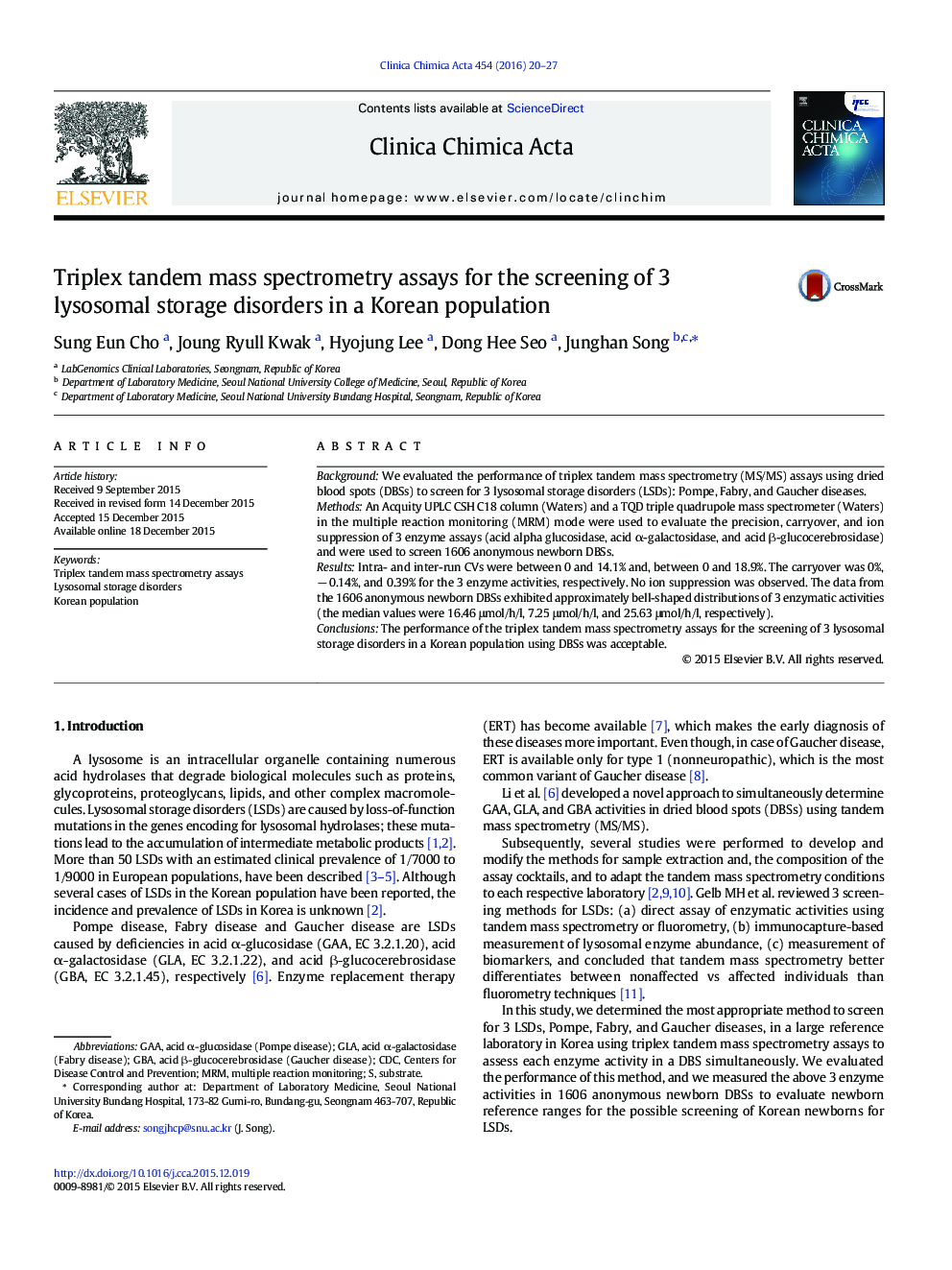| Article ID | Journal | Published Year | Pages | File Type |
|---|---|---|---|---|
| 1965166 | Clinica Chimica Acta | 2016 | 8 Pages |
•We evaluated the performance of triplex tandem mass spectrometry assays.•We used dried blood spots to screen for 3 lysosomal storage disorders.•The precision, carryover, and ion suppression results were acceptable for screening.•Enzymatic activities from anonymous newborn DBSs exhibited bell-shaped distributions.•The triplex MS/MS assays are acceptable to screen for 3 LSDs in Korea.
BackgroundWe evaluated the performance of triplex tandem mass spectrometry (MS/MS) assays using dried blood spots (DBSs) to screen for 3 lysosomal storage disorders (LSDs): Pompe, Fabry, and Gaucher diseases.MethodsAn Acquity UPLC CSH C18 column (Waters) and a TQD triple quadrupole mass spectrometer (Waters) in the multiple reaction monitoring (MRM) mode were used to evaluate the precision, carryover, and ion suppression of 3 enzyme assays (acid alpha glucosidase, acid α-galactosidase, and acid β-glucocerebrosidase) and were used to screen 1606 anonymous newborn DBSs.ResultsIntra- and inter-run CVs were between 0 and 14.1% and, between 0 and 18.9%. The carryover was 0%, − 0.14%, and 0.39% for the 3 enzyme activities, respectively. No ion suppression was observed. The data from the 1606 anonymous newborn DBSs exhibited approximately bell-shaped distributions of 3 enzymatic activities (the median values were 16.46 μmol/h/l, 7.25 μmol/h/l, and 25.63 μmol/h/l, respectively).ConclusionsThe performance of the triplex tandem mass spectrometry assays for the screening of 3 lysosomal storage disorders in a Korean population using DBSs was acceptable.
